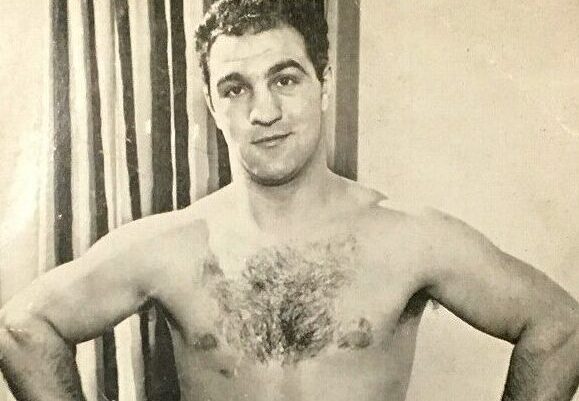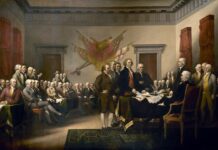“The toughest fighter I could face would be the man who’s the hardest to knock out, and the fella who was the hardest to knock out, he was just a bull, would be Rocky Marciano. He was courageous… I don’t know if I could have beaten him.”
These humble words were uttered in 1976 by the current heavyweight champion of the world, Muhammad Ali, widely considered the greatest boxer in history. Muhammad Ali, who possessed a boastful, taunting, and rebellious attitude to everybody, momentarily broke character to unveil his deep respect and admiration for one of the toughest men to lace leather: Rocky Marciano.
Ali thought Marciano was dangerous, because as the man himself put it, “a mauler, a brawler, a man who kept coming. You couldn’t put him to sleep… you can’t teach anyone to fight like Marciano.”
The story of Rocky Marciano, his humble upbringing, the march to the heavyweight title, and the repeated displays of iron determination and grit display the true meaning of effort. An effort is defined by the Oxford Dictionary as “a vigorous or determined attempt.” Throughout this article, I’ll discuss how Rocky Marciano’s effort carried him through a hardscrabble upbringing and boxing, citing evidence from Mike Stanton’s autobiography on Marciano, titled “Unbeaten: Rocky Marciano’s Fight for Perfection in an Imperfect World.”
The Boy from Brockton
Rocco Francis Marchegiano was born on September 1st, 1923, weighing 12 pounds and 10 ounces. Born to two Italian immigrants from the Old World, Rocco was born in the industrial Massachusetts town of Brockton, famous for its numerous shoe factories. His father, Pierino Marchegiano, was orphaned at a young age and had fought in the First World War after immigrating to America. He married Lena Picciuto, a gregarious woman who was attracted to the quiet yet kind Pierino.
Little Rocco would face his first, but certainly not last, fight for his life in the form of pneumonia. When the doctor saw how ailing the baby was, he remarked, “his spirit alone will save him.” Rocco however would make a full recovery soon after. Joined by 5 more siblings in the years to come, the Marchegiano family soon grew in size.
“His spirit alone will save him.”
Rocco’s early life was occupied by a loving relationship between his mother and father, despite the hardships of his time, which included the economically devastating Great Depression. His father labored in the shoe factories of Brockton, an incredibly labor-intensive job as he “pushed the pedals of a clattering machine with his feet, shaping the shoe leather around a mold” whilst enduring blistering temperatures in the factory.
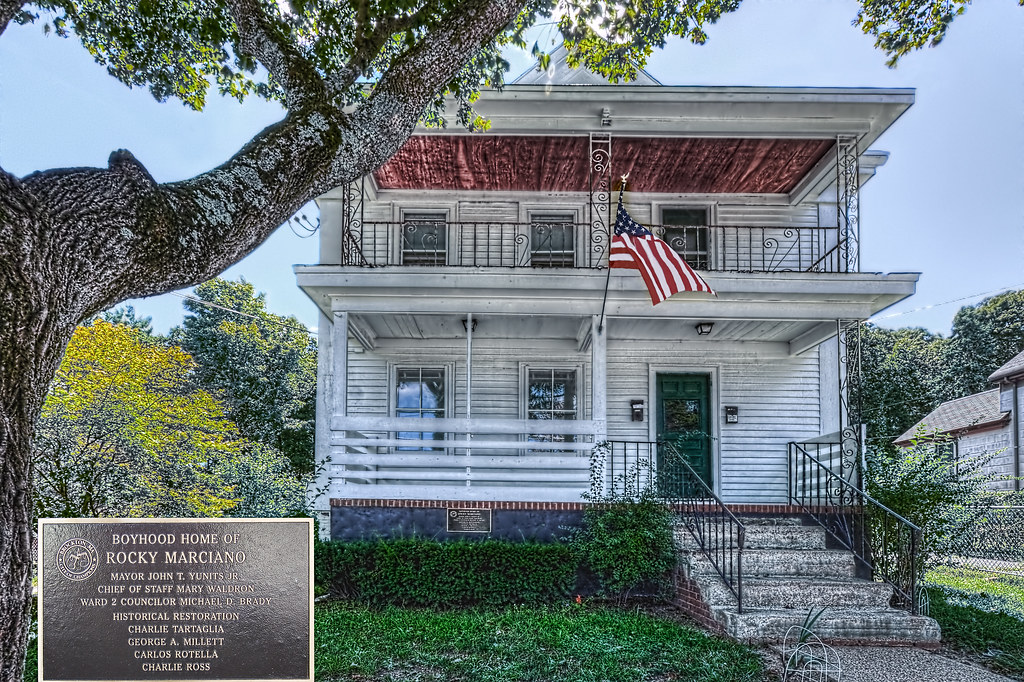
Rocco, who picked up the nickname ‘Rocky’ early on in his youth, lived in a community inhabited mostly by recent immigrants from Europe. Rocky would form strong friendships with numerous Italian, Jewish, Polish, or Irish boys in the neighborhood. “It didn’t make a difference if a kid was Italian, Irish, Jewish, or Negro – we all worked with our hands,” Rocky would later reminisce.
After Rocky got into fights with other boys in the neighborhood and cried to his mother about it, his uncle Johnny created a makeshift punching bag out of sawdust and told Marciano to swing at it daily for half an hour. By the age of eleven, Marciano was fighting constantly – on the street and in makeshift boxing rings.
In the 1930s, boxing was the second most popular sport in the United States – only behind baseball. As author Mike Stanton put it, “[boxing’s appeal] filtered down from the big city to small-town fight clubs… the boxing ring was a place where the individual could shine by displaying courage and heart, cunning and toughness, skill and determination.”
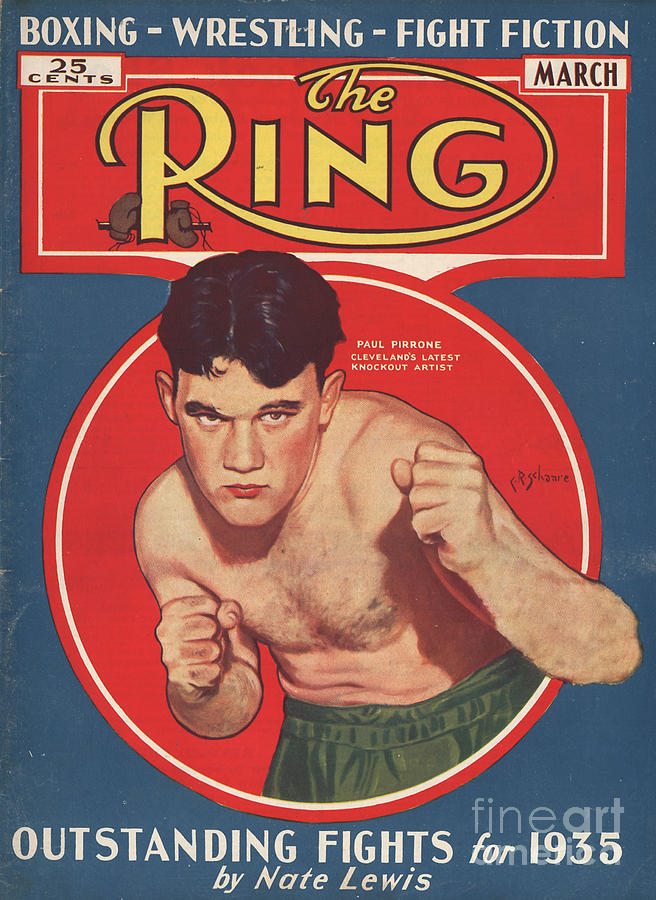
Rocky never performed well in school and failed to graduate high school. With the help of his uncle Johnny, he worked a variety of jobs, including as a ditch digger, a landscaper, and even worked at the Brockton shoe factory. Rocky languished in these roles and even commented that he felt as if he was “a nobody,” a man who seemed destined to an unspectacular life, a life of hard and menial labor living paycheck to paycheck.
“It seemed a life of ditch-digging is what Marciano had in store, but things would change rapidly through the help of two explosive fists.”
It seemed a life of ditch-digging was what his future had in store for him, but things would rapidly change through the help of a childhood friend, and two explosive fists.
From Marchegiano to Marciano: Rocky’s Introduction to Prizefighting
Marchegiano, trying to get a break out of his job, wanted to play baseball more than anything else. Marchegiano knew that he was short and stumpy and would have made a good catcher. But he needed money fast, and waiting for a semi-pro team to start their season wouldn’t catch it. With the help of Allie Colombo, an old childhood friend who had some limited experience organizing fights, Rocky got into some amateur bouts.
Rocky got into shape and began to take formal boxing lessons with Colombo. For training, he and his friend would run through Brockton in worn-out shoes for up to 10 miles at a time. It was a training regimen they would maintain for the next 9 years. Rocco realized that he did far better in boxing than in baseball, and fully switched over to the former. In 1948, Rocky Marchegiano underwent a “marked improvement,” advancing to the semifinals in the New England golden gloves amateur boxing tournament, a huge achievement for a young fighter.
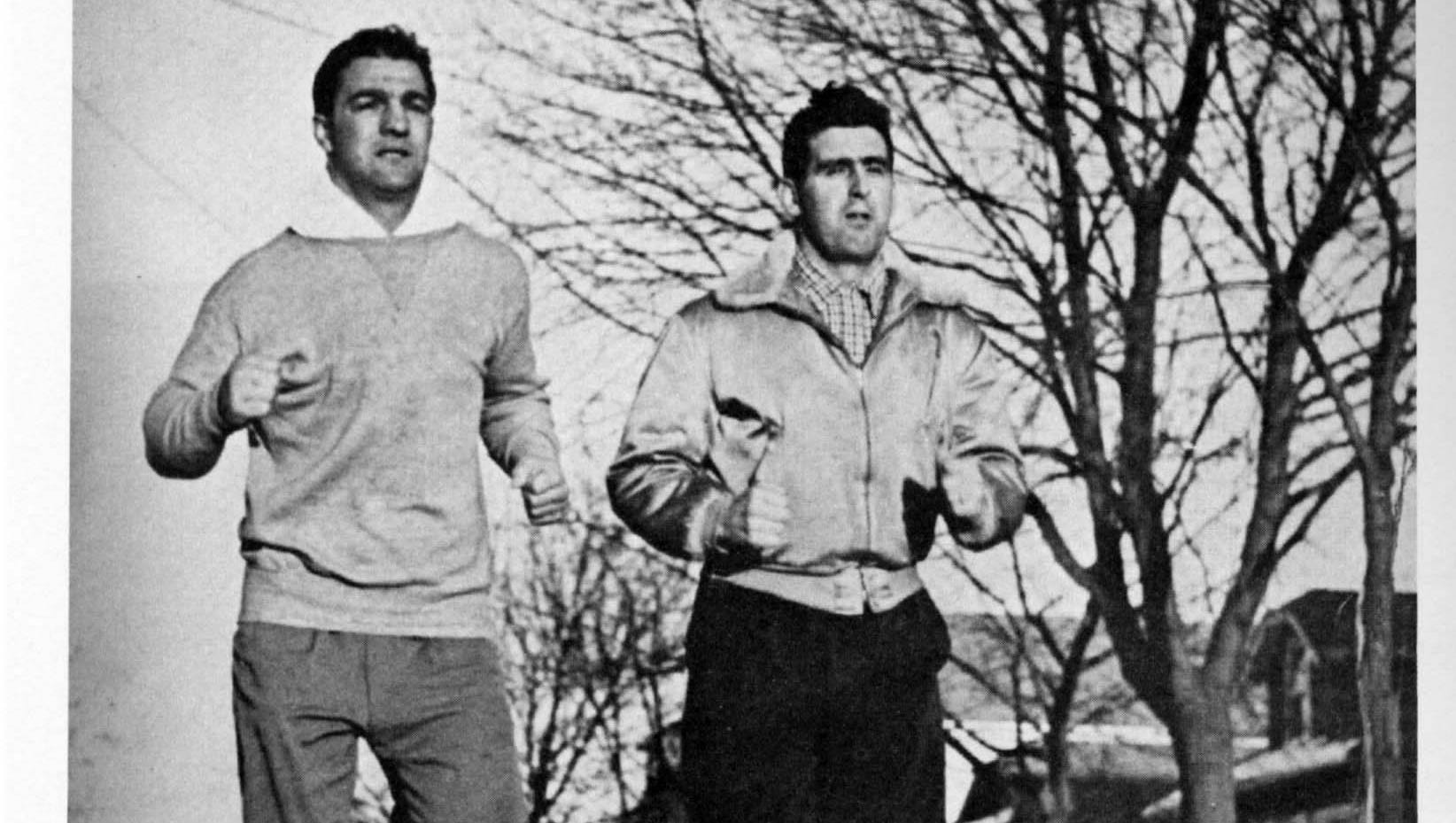
At this time, Rocco Marchegiano changed his ring name to Rocky Marciano, because ringside pronouncers were having a hard time saying his Italian last name. Marciano, Rocky stated, was Italian but still pronounceable enough. At this time, he also picked up the nickname “The Brockton Blockbuster”.
With his record as a prominent local boxer, Marciano was aided by Allie to get in contact was set up with Charley Goldman and Al Weill, two New Yorkers who acted as prominent boxing trainers and managers, respectively.
Al Weill was an entrepreneurial man, who had become a prominent businessman in the area and later a boxing manager. The role of a manager in boxing is to organize their fighter’s finances, set up fights with other boxers (especially in an age where there was a lack of oversight by athletic organizations), and work to promote their fighter’s image.
In my article on Jack Dempsey, I covered how his manager Jack ‘Doc’ Kearns was so instrumental in setting Dempsey up to fight in financially lucrative bouts. Weill was Marciano’s Kearns, and he got him to the title.
“I never saw anyone cruder than Rocky, but I saw something, that strong right arm.” – Charlie Goldman
The role of Goldman, a visibly scarred Jewish man who had grown up in Brooklyn constantly engaging in fistfights with anti-Semitic Americans, was to train and mentor Rocky. Goldman remarked, “I never saw anyone cruder than Rocky, but I saw something, he had a strong right arm.”
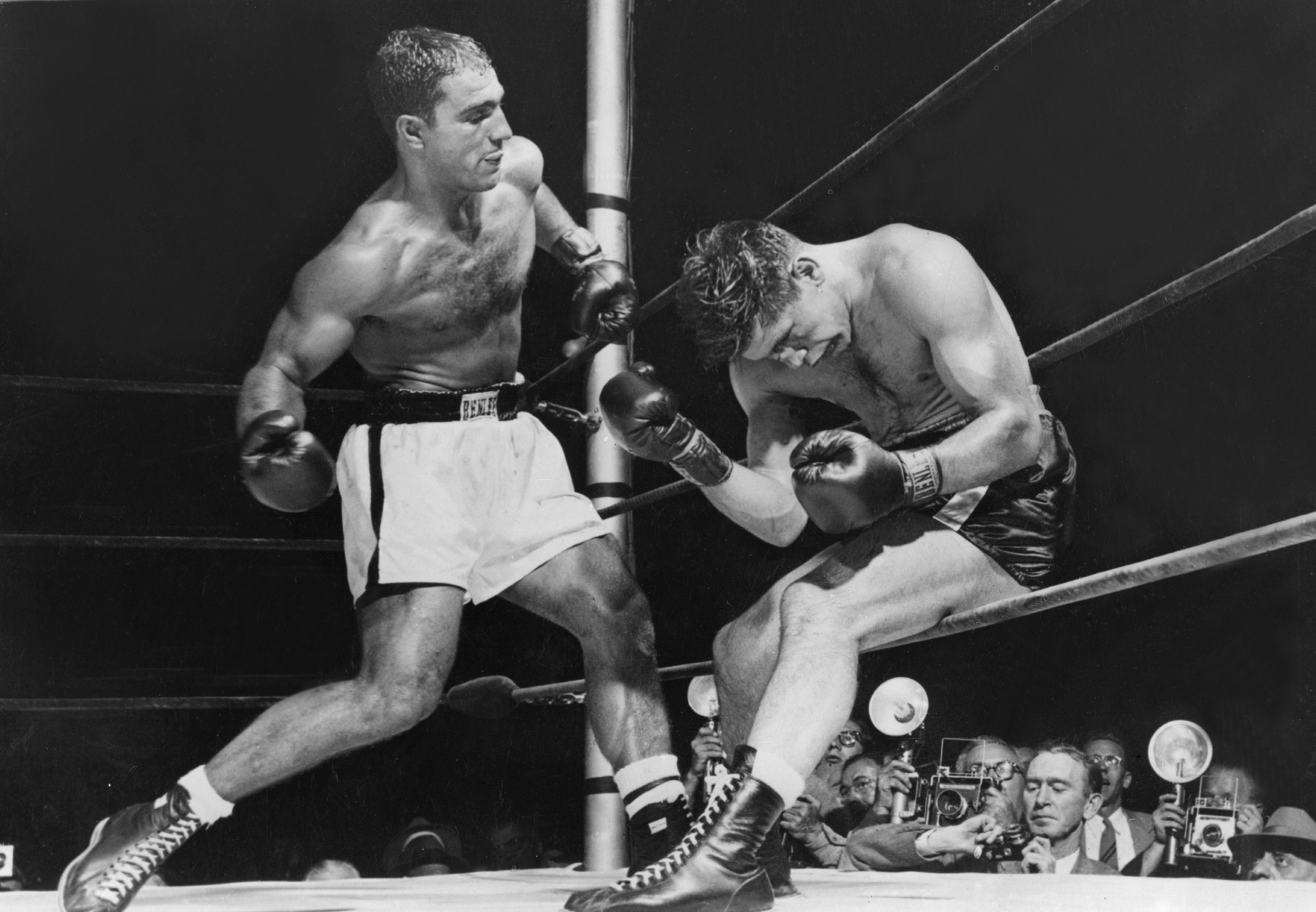
Goldman’s training philosophy, born out of the cruel environment he lived in, was that to survive in the ring, you had to maximize your strengths and turn apparent weaknesses into advantages. “Give me a tall fighter and I’ll make him taller, and for a short fighter I’ll make him shorter,” Goldman would often exclaim. For Rocky, he saw a 5″11, 200-pound clumsy fighter who only seemed to have punching power and raw courage. Goldman wouldn’t change Rocky’s style, he would only strive to push the pedal.
Rocky Marciano’s Boxing Style and Technique
Arthur Daley, a sports columnist, would write in the 1970s that “no champion possessed such physical handicaps like Rocky Marciano.” Rocky was 5’10” – and when he cut down his weight – was 185 pounds on average, a size that was small for a heavyweight boxer. Also, Marciano possessed arms likened to that of a penguin, at just 67 inches, often up to 10 inches smaller than his opponents! Reach is important in boxing because it determines how far away you can punch – a fighter with long arms can effortlessly pummel others, whilst a short-armed fighter has to come in close to score hits, an action that leaves them vulnerable to defensive punches.
Rocky’s smaller size wouldn’t have been so bad if he was quick or well-balanced, but the inexperienced boxer was slow-footed and had “two left feet… tripping himself when he punched.”
Goldman, following his principle of shaping his apprentices’ weaknesses into strengths, set to straighten out Marciano. Since Marciano was short, he had Marciano adopt a ‘bobbing and weaving’ fighting stance – essentially a crouch. A low crouch, alongside Marciano’s small size, was hard to hit by Marciano’s opponent. Additionally, it could also serve as a launching point for Marciano to throw looping shots, essentially using his crouched position as a springboard for bone-crushing offensive power. Eventually, Marciano grew to time his opponents’ punches by instinct, which ironically made the extremely aggressive fighter extremely hard to hit.
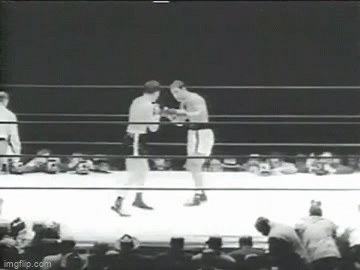
For Marciano’s short arms, Goldman decided that he should crowd his opponent and use his short arms to his advantage by throwing shorter punches. The longer an object is thrown, the more resistance it encounters and thus the less force it inflicts on a target. The same theory applies to punches – a short, quick punch delivers more force than a long swing. So for Rocky, his goal was to get in close and throw short punches whilst essentially wrestling his opponents in the clinches.
“When [Marciano] slugged it out with boxers, he always came out on top.”
Any person who has wrestled with a smaller and shorter figure knows how difficult it can be – shorter people have shorter arms, allowing them to grapple and punch quicker and harder. The Brockton Blockbuster would use his short penguin arms to pry open his opponent’s guard, then lay them on the canvas. For Marciano, when he slugged it out with boxers in the trenches, he always came out on top.
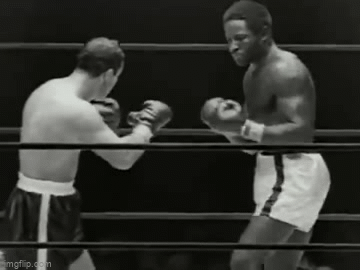
Even with Rocky’s chronic unbalance, Charley Goldman turned this into a strength. Rocky struggled with adhering to the orthodox style of moving your lead foot forward, followed by your back foot. Goldman had Rocky do the opposite of the orthodox stance, shuffling his back foot first, followed by his front. This meant Rocky could cover more ground in order to close in with his important – a vital objective given the Italian’s short reach.
Whilst laughing, Goldman would exclaim: “[Rocky’s victims] all look better than he does as far as moves are concerned, but they don’t look so good [laying] on the canvas.”
“[Rocky’s victims] all look better than he does as far as moves are concerned, but they don’t look so good [laying] on the canvas.”
For opponents thinking they could just stay away from Rocky, they were out of luck. Rocky possessed two far-reaching and deadly punches – his overhand right and his left hook. An overhand right in boxing is where you throw your punch over your shoulder, like a baseball. Rocky would propel himself forward, shifting his entire body weight into his punch. It allowed him to throw long-range projectiles at opponents.
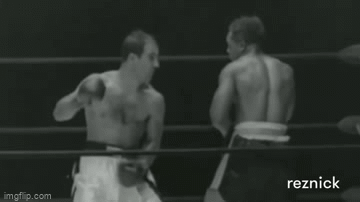
Despite being a right-handed fighter, Rocky possessed a strong left too. He used his back leg to propel him forward into throwing his left hook, allowing the man with such a short reach to connect flesh with leather.
Charley Goldman’s greatest accomplishment was turning the clumsy, bullish Marciano into a potent fighting machine. He found Marciano with a strong will and strong arms, and he left him that way, only he added to his arsenal excellent defense, superb footwork, and the ability to close the distance.
The Brockton Blockbuster’s March to the Title
Nicknamed by his friends as “The Rock,” Marciano began to drive forward with zeal toward the heavyweight crown by 1949. As one of his early opponents recalled, “he had the punch and he had the heart.” Marciano was driven by a desire to make a name for himself and to avoid slipping into a cycle of poverty and backbreaking labor in Brockton.
Marciano believed he could attain fame and popularity in boxing, later stating that “I was a nobody, in the ring I became a somebody.” Rocky began a determined workout routine, running 8 miles every day for the next 8 years – even on Christmas and during his children’s birthdays. He would throw punches underwater in a swimming pool for hours to build endurance, practice with a heavy medicine ball, and spar up to 125 rounds for a boxing match – well over 5 times the average for today’s fighters. Famous boxing trainer Ray Arcel stated that “nobody worked harder than Rocky.”
“I was a nobody. In the Ring, I became somebody.” – Rocky Marciano
With this firm determination and effort in place, the Rock began his march to the title. For 16 straight fights, Rocky knocked out all of his opponents within 5 rounds. For a nation that had just seen the famous boxing heavyweight Joe Louis retire, Rocky began to attain significant amounts of attention. One spectator stated that “[When Rocky fought] the crowd was always expecting a knockout – they liked that aggression. He knocked everybody out.”
Despite some clumsy performances by Rocky (several newspaper writers still called him “an amateur”), Goldman had the utmost confidence in his pupil. “Someday, he’s going to surprise you fellows,” he would often say. Early on, Marciano faced Carmine Vingo, another Italian boxer who was known as a formidable knockout puncher.
Displaying his terrifying power, Marciano would knock out Vingo in the 6th round, paralyzing him and causing a massive contusion in the brain. Vingo was carried to a hospital and given his last rites, whilst Marciano prayed for him and swore he would quit boxing if his opponent died. Vingo pulled through but was never the same again. He would walk with a permanent limp and be blind in one eye.

Rocky would go on to fight Rex Layne, a popular heavyweight juggernaut who was the betting favorite. But one of Rocky’s overhand rights saved the day, shearing off Rex’s two front teeth and winning the Brockton Blockbuster the bout. Marciano also knocked out the aged veteran Joe Louis, at the time considered the best heavyweight boxer who ever lived. Louis was on the comeback trail after retiring and was well past his prime, and Marciano dispatched him within 8 rounds.
By now, the world saw Rocky Marciano as the clear heavyweight contender for a shot at the heavyweight crown, then held by the cagey veteran Jersey Joe Walcott, who had been boxing for nearly 22 years.

Walcott, despite being nearly 38 years old, was widely considered to be in his prime. He was an extremely late bloomer, and just a few months earlier had knocked out the slick Ezzard Charles to become heavyweight champion. Walcott was a slick, mobile boxer, the same type of fighter who gave the slow Marciano trouble. But nothing could have foretold the coming bloodshed between the two.
The War with Walcott
In preparation for the upcoming fight in Philadelphia dated September 23rd, 1952, Marciano secluded himself in New York’s Catskill mountains. Totally devoted to committing himself mentally and physically to his chance at the title, Rocky “shut himself from the outside world… he read no mail and took no phone calls. He did not talk to his wife at all.”
The champion would later state that “In my own mind I’m boxing all the time.” Walcott, confident of victory, swooned that “He can’t fight! If I don’t whip him, take my name out of the record books.”
Swamped by thousands of fans, Rocky, Allie Colombo, Charley Goldman, and Al Weil made their way to Philadelphia from the Catskills. When one of Rocky’s entourage went to a local bar for a drink, they yelled “Bet everything that Rock will win!” It was another event in a long theme of Brockton’s citizens betting copious amounts of money on their boy winning the title. Rocky would comment, “I don’t intend to let [my people] down.”
“I don’t intend to let my people down.”
When the fight began, Walcott surprised everyone and came out swinging, using his agile footwork to open up avenues of attack on the Rock. In the middle of the first round, Walcott launched an explosive left hook on Marciano, who went down.
When hard punches land on the human head, they can cause temporary blackouts or concussions. “It’s like when you’re in a room, and the light just gets turned off,” is how Goldman explains the experience. “But for Rocky, the lights never go off.” Rocky would get up after just 4 seconds, vindictively muttering to himself to nail his opponent next time.
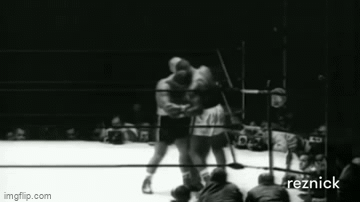
Rocky recuperated well and the fight became a slugging match, with Rocky growing more accurate with his punches as it went on. By the third round, it was Rocky – weighing 184 pounds to Walcott’s 196 – forcing the champion back and throwing damaging rights to the head.
By the sixth round, Rocky was in firm control, “slowing down [Walcott], displaying that the old man won’t last a few more rounds.” But from an unknown chemical on Walcott’s gloves, Rocky would be virtually blinded and vulnerable to Walcott’s punishing pugilistic power.
Rocky was in disarray throughout the later rounds. “I was thinking… I don’t know how long this will go on, I’m trying to keep him away! I was praying then,” the fighter would later say. Finally, a veteran cutman (a person who treats physical cuts obtained during a boxing match) obtained sponges with water to clear Rocky’s eyes. The cutman calmly stated, “You don’t have to see, just get your hands on this guy’s body and pound.”
Even with this aid, Marciano was still badly behind on the scorecards. With his cornermen all telling him to knock the champion out and his eyes burning from the chemical, Marciano advanced calmly toward Walcott in the 13th round. Feinting a left, Marciano threw a monstrous right, smashing into Walcott’s face and causing a “bone-rattling crack audible in the stadium.” It was “as hard as I’ve ever seen a man get hit,” said boxing commentator A.J Liebling.

Walcott went down and didn’t get up. Rocky Marciano was now the new heavyweight champion.
Four Years as Champion
Marciano was treated like a king after the victory. He visited President Eisenhower at the White House and enjoyed the welcome home parade of 100,000 people in Brockton. As a man who came from a humble background of ditch digging and factory work, it was exhilarating. “It was like the best movie I ever saw,” Rocky would state.
For boxing especially, it was a wild ride to be a heavyweight champion. At the time, there was only one heavyweight champion, leading sports columnist Jimmy Cannon to comment “Being the heavyweight champion [at the time] was like being President. There’s only one at a time, Rocky Marciano’s bigger than any of them.”

Despite the accolades and new fame, Rocky didn’t shy away from his dedication to the sport. He maintained his strict regimen of running 8 miles a day, watched his diet intake, and was never out of shape.
Marciano had agreed to take a rematch with Walcott before his first fight, and he was a man of his word. In preparation for the fight, Goldman and Marciano analyzed the film of the first slugfest, with Goldman recommending that Marciano start the fight at an increased pace. Rocky followed his instructions, knocking out Walcott in the first round.
Rocky then would go on to face Roland LaStarza, another prominent young Italian heavyweight. The fight was competitive early on, with LaStarza outboxing the clumsy Marciano, who was suffering from ring rust after having not fought for 5 months. But Marciano began to connect in the middle of the fight, scoring painful body blows with short, compact punches – a product of Goldman’s training. Soon, Marciano, had LaStarza backed up on the ropes, delivering bone-crunching blows before knocking LaStarza out of the ring, and the referee stopped the fight soon after. The challenger suffered bone damage in his arms after the fight.

In his second title defense, the Rock would face the slick Ezzard Charles, who had beaten Joe Walcott twice a few years before. With excellent footwork, long-reaching arms, and a brilliant ability to time his punches, Charles was one of the most dangerous opponents Rocky would face.
In their first fight, Charles smoothly kept Rocky away, and even open up a horrific gash two inches wide and half an inch deep. It began to bleed badly, but Marciano was undeterred. He ramped up the pace and began to dominate the fight, throwing dozens of swift yet still powerful blows. Rocky hit Charles in the throat so hard that the challenger lost all use of his voice for the next day. Additionally, “an egg-shaped lump erupted on Ezzard’s jaw (a blood clot), his right eye was closed, and his lip was swollen.”
But Charles, in a superhuman feat of endurance, surprisingly didn’t go down. Rocky would end up winning a 15-round unanimous decision victory, a victory that he didn’t have pride in. For the champ, he was determined to knock Charles out cold in the second fight.
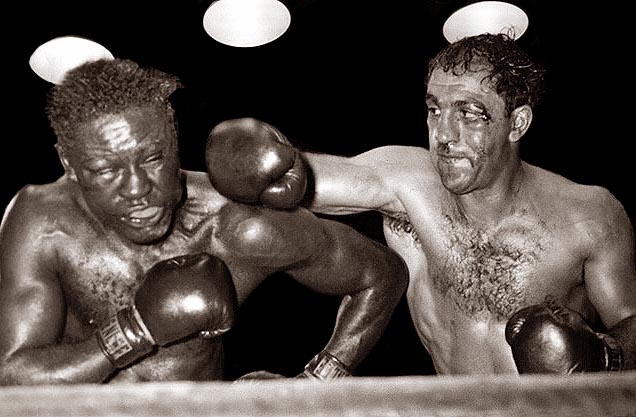
Again facing off against Charles, Marciano dominated his opponent, fighting brilliantly in the clinches that sapped Charles’ strength, throwing “textbook left jabs and right crosses.” Marciano scored an early knockdown and seemed poised to win the fight, until Charles accidentally elbowed him in the face, splitting his nose in half.
What followed next would go down in history as one of the most courageous feats of boxing. When Rocky sat down with his cornerman in between rounds, Allie Colombo bluntly told him, “You got to knock the guy out now, the cut is bad. Your nose is split in two. They may have to stop the fight.” Marciano replied, “I’m not concerned about the cut, I’m worried about losing the title!” He went after Charles, desperate to finish him off.
“You’ve got to knock the guy out now, your nose is split in two.”
Marciano brutalized Charles, heroically knocking him out in the 8th round, and saving himself from losing the title. Muhammad Ali would later comment that this fight was what solidified the Brockton Blockbuster as being the toughest boxer who ever lived. “The fight underscored Rocky’s indomitable will to win. He had shown time and time again his incredible determination in the face of adversity,” commented Mike Stanton.
Rocky would then knock out the British heavyweight champion Don Cockell, and in 1956 go on to face Archie Moore, a veteran fighter who was confident in beating Rocky, calling him “crude.” But Rocky, through aggressive footwork and an excellent defense that kept him protected from Moore, walloped Moore into a knockout victory, his 49th. Moore would go on to say “It was like fighting an airplane propeller. Rocky Marciano was the strongest man I faced in the ring, and believe me I faced some strong men.”
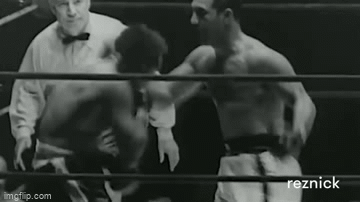
“Rocky Marciano was the strongest man I faced in the ring, and believe me I faced some strong men.” – Archie Moore
After the fight, Rocky would admit that “this will be my last fight. It’s getting too hard to train, and I’ve lost the hunger for the sport. I’ll quit before I go into a fight as an old man and get whipped.” He was 32 years old, and his style of bobbing and weaving was causing serious back pain, and he missed his family, whom he rarely saw because of his strict training. Having dominated the heavyweight division for 4 years, Marciano was done.
America’s Houseguest
Affectionately called “America’s guest,” Marciano would work in a number of movie, television, and art events to earn money due to his celebrity status. He spent more time with his family and maintained close connections with Allie Colombo and Charley Goldman. Despite multiple pleas to return to the ring, the Rock stayed committed to his decision.
In 1969, the former boxing champion Muhammad Ali was looking to make some money and agreed to spar lightly with Marciano for a computer simulation that would put the two fighters against each other. Marciano and Ali were considered some of the most dominant heavyweights in history, and a fake computer simulation of a hypothetical fight between the two – augmented by real footage of them throwing fake punches – would make a lot of money.
The two threw fake punches and put on a façade of boxing for a few dozen rounds, which were then used to illustrate what a potential match would have looked like. Ali, commenting on the experience years later, was shocked at the power Marciano still possessed at the age of 45: “He was hitting me with these fake punches, and my arms were hurting after a few rounds! I couldn’t even lift a salt shaker!”

After the promotional “Superfight,” Marciano was suddenly killed in an airplane crash in Iowa, a few days before his 46th birthday on August 31st, 1969. He “died with the blunt force he had used to dispatch so many opponents in the ring.” Joe Louis, Muhammad Ali, Jackie Gleason, and Henry Youngman paid their respects at his funeral.
Marciano’s retirement left him with a perfect record of 49 wins and no losses. His unrelenting courage and ferocity, immense punching power, and cunning defense earn him a spot as one of the greatest heavyweight boxers of all time. He is the only heavyweight boxer in history to retire undefeated, having never lost a fight in his 8 years of boxing.
Of Rocky, Pulitzer Prize winner Red Smith said:
“He was the toughest, strongest, most completely dedicated fighter who ever wore gloves. Fear wasn’t in his vocabulary and pain had no meaning.”
Like Jack Dempsey, he came from nothing and become the most popular man on the planet. His remarkable journey teaches us about the art of effort – never to give up despite adversity, never to give in at our lowest moments, and to never stop punching back.

Sources: Stanton, Mike. “Unbeaten: Rocky Marciano’s Fight for Perfection in a Crooked World,” Henry Holt and Company, 2018.


